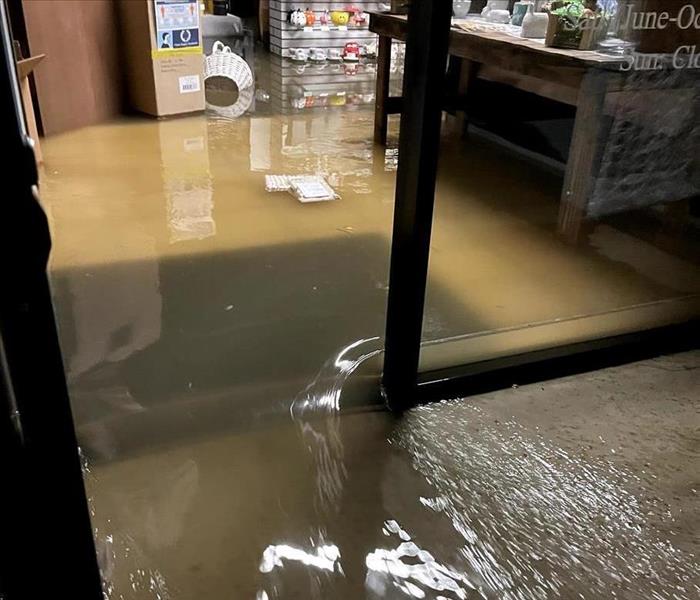Is Your Commercial Property Prepared
3/21/2022 (Permalink)
 You should always be prepared for the worst. Call SERVPRO of Camarillo if the worst happened. 805-484-5009
You should always be prepared for the worst. Call SERVPRO of Camarillo if the worst happened. 805-484-5009
There is no such thing as a disaster-proof property. Nor is there a perfect, all-encompassing disaster plan for California. Our unique location puts us in the path of Fires, Earthquakes or Floods.
Still, a vigilant property manager can mitigate the impact of these unforeseen disasters with some careful preparation. Here are seven things you should do to be prepared for a disaster and its aftermath:
1) Have an Emergency Action Plan in Place
An effective plan will enable your tenants to vacate the property quickly and calmly, as well as gather at a safe distance from the building. Make sure your exits are clearly marked, unobstructed, and known to all. OSHA provides a great tool for developing an Emergency Action Plan for your property that encompasses virtually any scenario.
2) Know Your Tenants
Do you have tenants with special needs such as those who are visually, hearing, or mobility impaired? Are there small children (apartment complexes, daycares, etc.) that may require extra assistance/attention? What about those with respiratory issues? All of these conditions can impact how you implement your Emergency Action Plan.
3) Keep Your Contact Information Relevant
Make sure your employees and tenants provide you with the latest contact information. If someone is unaccounted for, being able to provide current and correct contact information will assist in any search. Also, make sure your insurance agent’s information is up-to-date, as well as your security personnel, the property owner. Make sure that everyone has your information as well.
4) Have an EAP for Your Data
Do you store sensitive documents on-site? If so, then keep originals and irreplaceable documents in fire-proof cabinets or safes.
How often do you move these to an off-site storage facility? If you aren’t using a cloud service, you should definitely look into an off-site storage location for tape and disk backups. Most banks offer a safety deposit box, which is a great place to store sensitive data. Go over your options with your IT professional.
5) Be Prepared for Insurance Claims
The easiest way to visualize and list assets on a commercial property is to film them. A simple walk-through with a high-definition camera – no need for Oscar-level cinematography here – pointing out large-ticket items like HVAC units, IT equipment, the condition of the roof, the foundation, doors and windows will make claims settlements that much easier in the event of a disaster.
Additionally, you’ll want to meet with your insurance agent to review your policy to make sure there haven’t been any changes to your coverage, or that your property is left exposed to a specific kind of disaster. FEMA provides a great PDF on property documentation here.
6) Consider The Aftermath
This is where things can get expensive. You’ve seen the roofers with ladders on their trucks canvassing your neighborhood after a storm. The same thing happens with commercial properties.
Be careful when employing a company to handle your repairs after a disaster. Ask if they are bonded and insured, as is the case with SERVPRO of Camarillo, and make sure to consult your insurance provider as well — they may only work with a select group of service providers. Ask other questions like: What sort of warranties do they offer? How long have they been in business? What seems like a good deal now may cost you a fortune later.
With SERVPRO Camarillo, you can rest assured that all the above criteria are met. No job is too small or too big in our point of view. Our attention to detail and customer satisfaction are our main priority!






 24/7 Emergency Service
24/7 Emergency Service